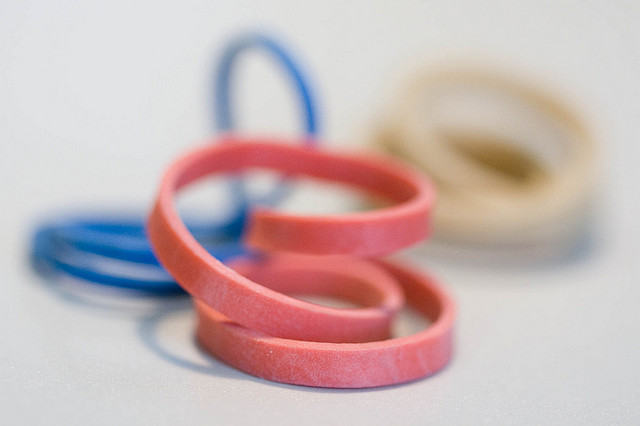
Apple went all-out in its patent assault on Samsung beginning in 2012, when Steve Jobs' promised "thermonuclear war" against Android became a reality. The patents used by the Cupertino device maker weren't just challenged in court, though. Various parties have challenged Apple's most important patents at the US Patent and Trademark Office, as well.
On Friday, the US Court of Appeals for the Federal Circuit issued an opinion (PDF) about an "ex parte reexam," filed against Apple's patent by an anonymous party. The reexam claimed that one of the patents upholding Apple's big win against Samsung, US Patent No. 7,844,915, never should have been issued at all. The '915 patent was described in a general way as the "pinch to zoom" patent, but its claims describe a way of distinguishing between one-touch and two-touch operations.
In 2013, the US Patent and Trademark Office's reexamination unit rejected all claims of Apple's '915 patent. A patent appeal board upheld the cancelation, leaving Apple to turn to the Federal Circuit, which has ultimate jurisdiction. On Friday, a panel of Federal Circuit judges sided with the patent office on some of the claims, but revived three others.
The judges found that the Board was correct about the "scroll and gesture limitation" part of the patent, which was properly rejected. But it had a different definition of the "rubberbanding" limitation.
This gets even more confusing because a different Apple patent, the '381 patent, is generally referred to as the "rubberbanding" or "bounce-back" patent. But the '915 patent also describes some elements of rubberbanding. When you pull down content on an iPhone, the phone takes a particular action—typically refreshing the page—if you pull past a certain point. The content then snaps back up, like a rubber band.
Tiny tweak
The Board of Patent Appeals found that Apple's "rubberbanding" patent claims were obvious in light of an earlier 2003 patent application by America Online, invented by Luigi Lira. That application describes a user scrolling between columns in a way that would cause another column to "snap into alignment with the display window."
So, a touchscreen, a pulling motion, and then the content "snaps into alignment"—in the view of the Patent Office, AOL had a kind of "rubberbanding," invented years before Apple launched the first iPhone.
Federal Circuit judges who considered the matter, though, said the Board improperly looked at all types of "rubberbanding." The judges gave weight to Apple's point that the earlier Lira patent "teaches that the screen should 'snap' to the next region of content" and achieved "the opposite effect from rubberbanding." Because the board should have limited its definition of rubberbanding to "sliding content backwards," the judges revived claims 2, 9, and 16 of the patent, remanding it for further consideration.
Although this is just one piece of the seemingly never-ending Apple v. Samsung conflict, it is a significant one—the '915 patent was one of a few non-design patents that Apple won significant damages for.
Looked at in a broader sense, the battle over the '915 patent is a pattern that has been repeated. Apple told judges and juries that its inventions in this case were a "revolution" that should remain pristine icons of American innovation, untouched and unused by competitors. Upon further review, though, there were earlier technologies that did almost exactly the same thing. When it comes down to brass tacks, Apple's inventions aren't so revolutionary; they're tiny tweaks to UI. The fact that the top patent judges in the country think that Apple should get a monopoly over snapping "backward," when snapping "forward" was invented years before, tells you a lot about how we got into the messy patent system we're in today.
What Apple did incredibly well was to package and execute ideas that weren't that new. The combination of the iPhone's concepts, design, and execution was truly revolutionary. But you can't get a reward for that in the form of a patent, at least not one that holds up under real scrutiny. Of course, a patent skeptic might argue that the billions of dollars in iPhone sales that Apple reaped were a pretty good reward.
Before we end, here's a brief recap on the state of play in the two big US lawsuits between the companies.
The first Apple v. Samsung case ended up with a $399 million win for Apple after two jury trials and other tweaks to the damages figure. The case went to the US Supreme Court, which heard oral argument in October. The justices ended up tossing the case back to the Federal Circuit for yet another recalculation of damages.
The second trial ended up with a $120 million win for Apple, which was ultimately upheld by the full Federal Circuit in October. Samsung has asked the Supreme Court to look at that, as well. If the justices aren't interested in hearing a second Apple v. Samsung case, then Apple's win will stand.
reader comments
58